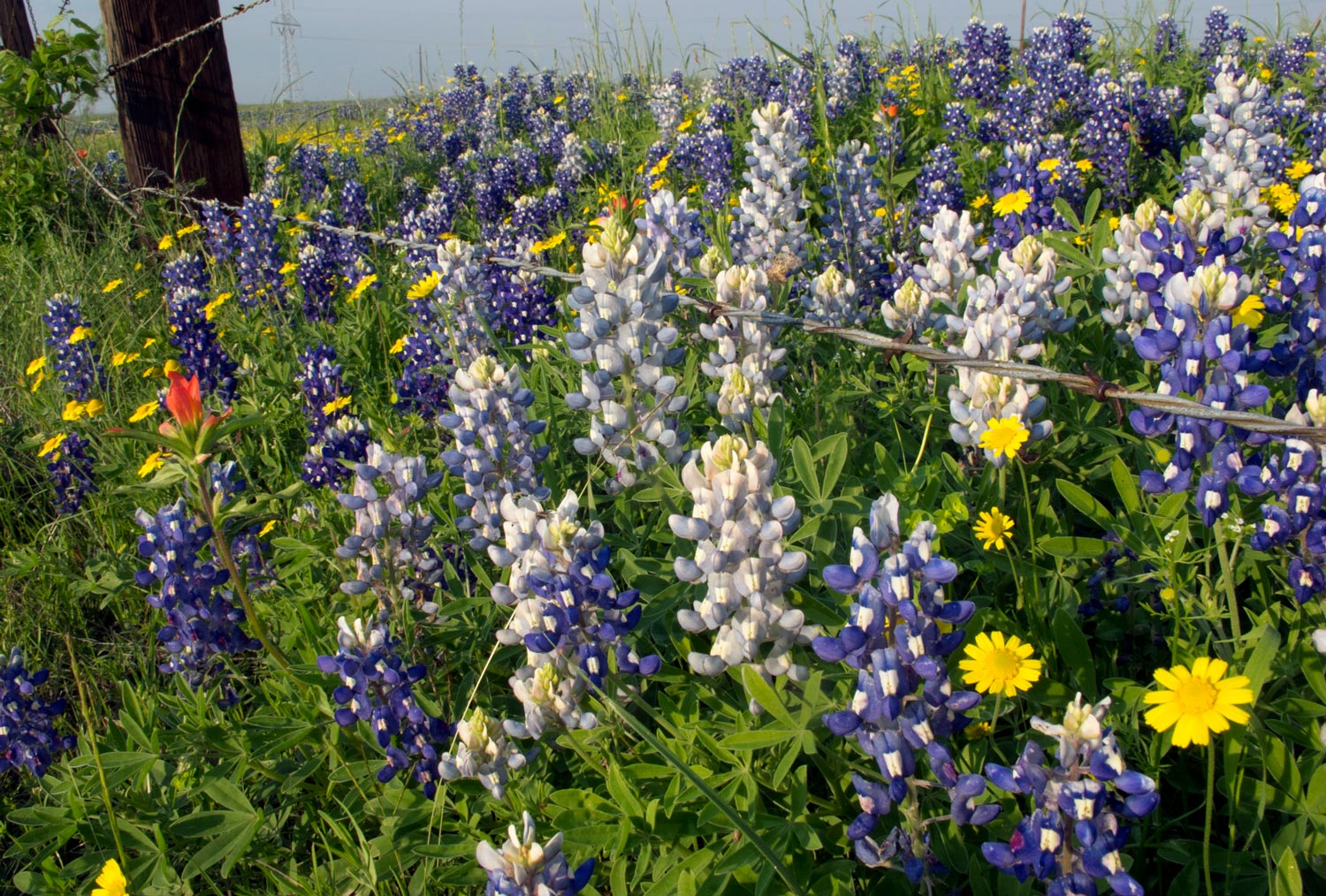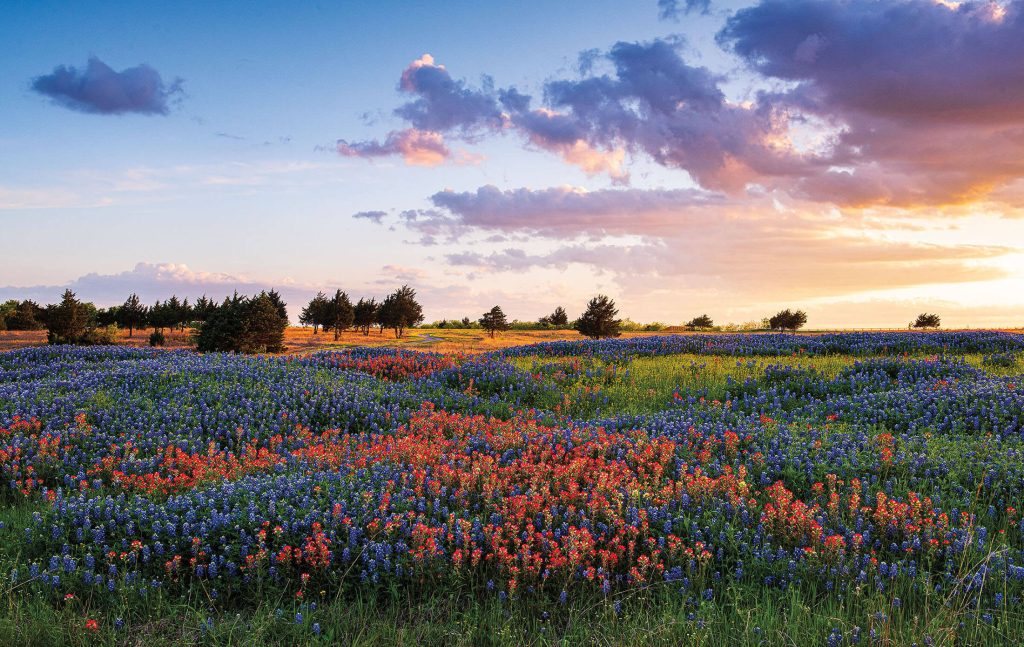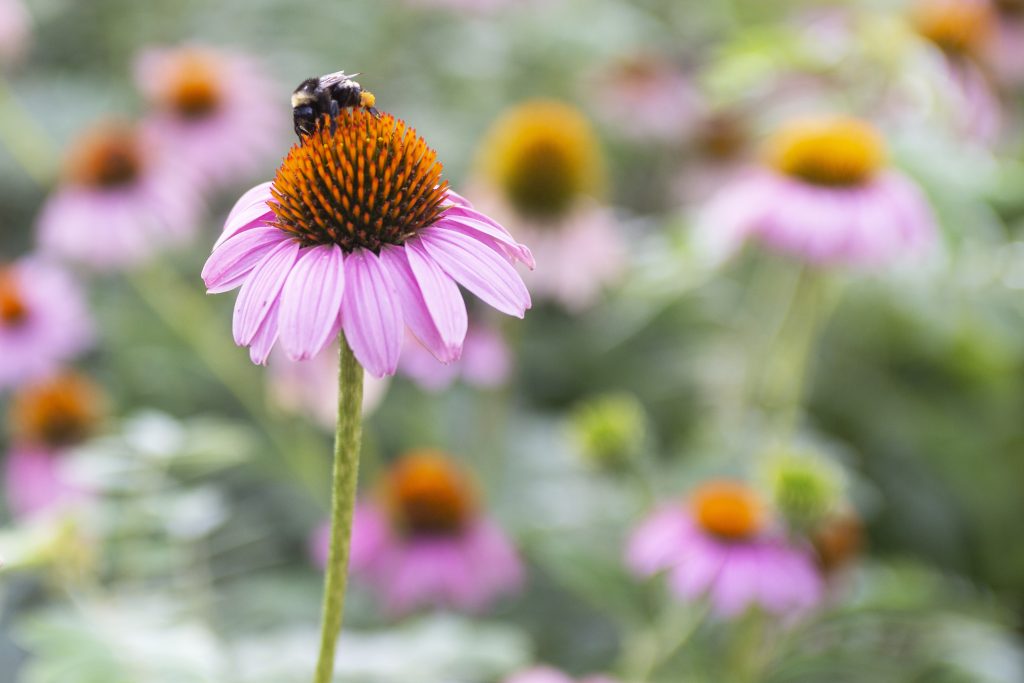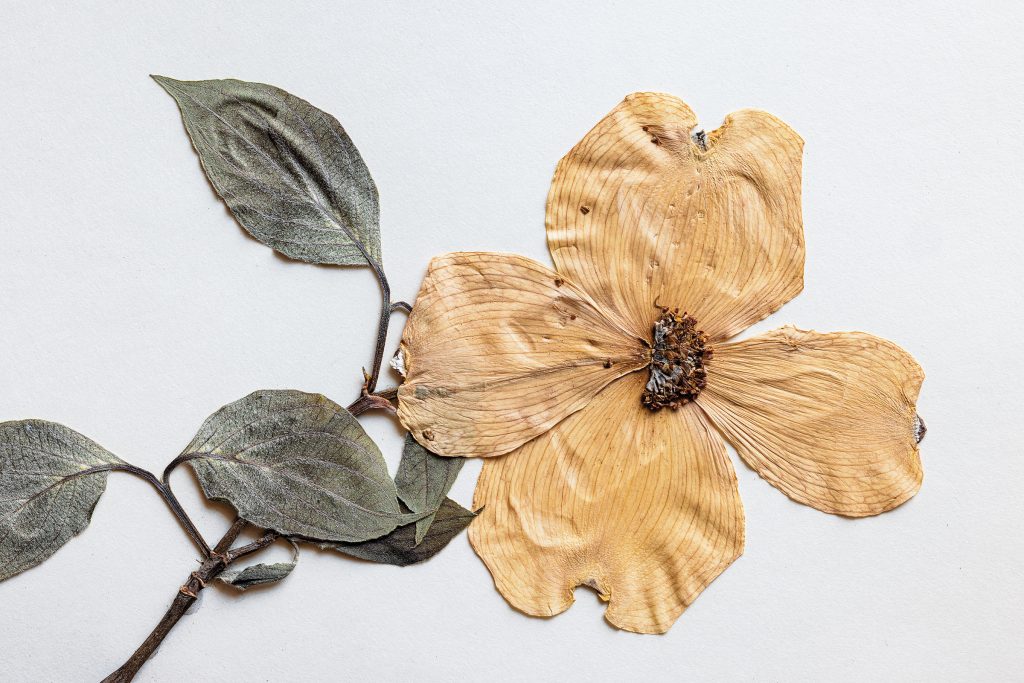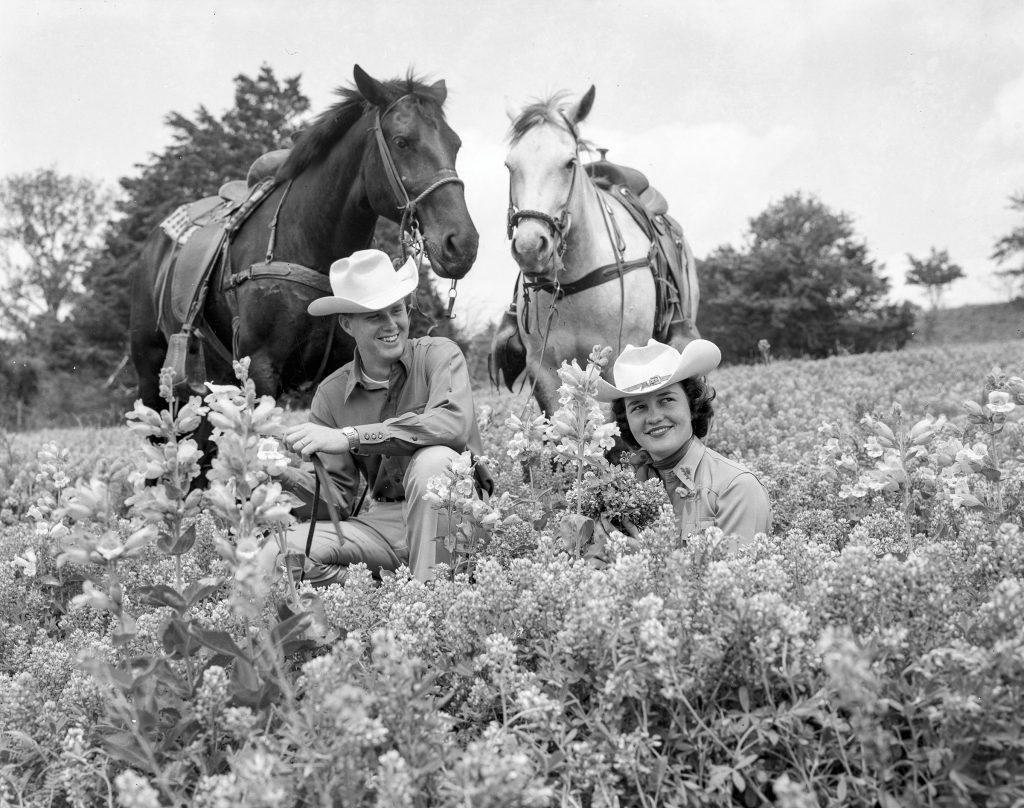Are you as wild for wildflowers as we are? Read the rest of our wildflower stories here!
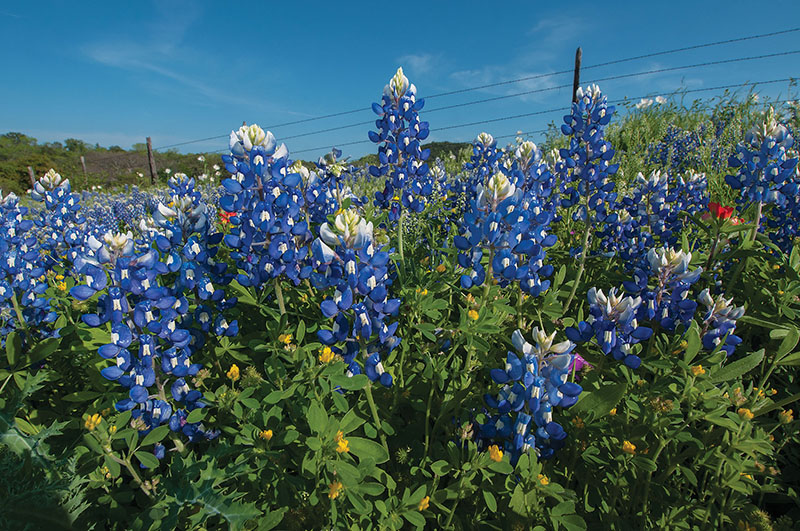
Bluebonnet
Lupinus texensis — Begins blooming early spring (but Big Bend bluebonnet can bloom as early as January). All six species of bluebonnet that grow in the state have been designated the State Flower by the Texas Legislature. A member of the large lupine genus.
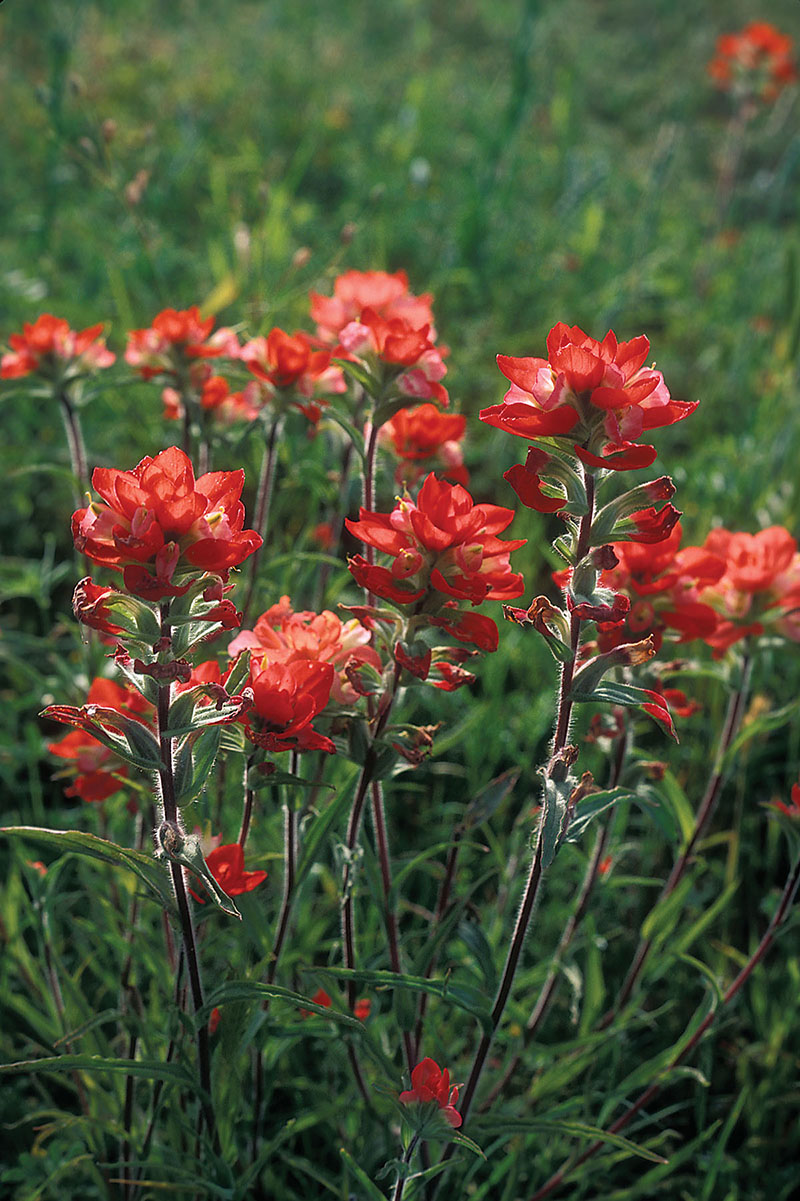
Indian paintbrush
Castilleja spp. — Blooms early spring throughout the state. Several species, whose colors vary from scarlet to orange, cream, yellow, and occasionally purple. The bright tips of the petal-like bracts look like they’ve been dipped in paint. The genus name honors Spanish botanist Domingo Castillejo (1744-1793).
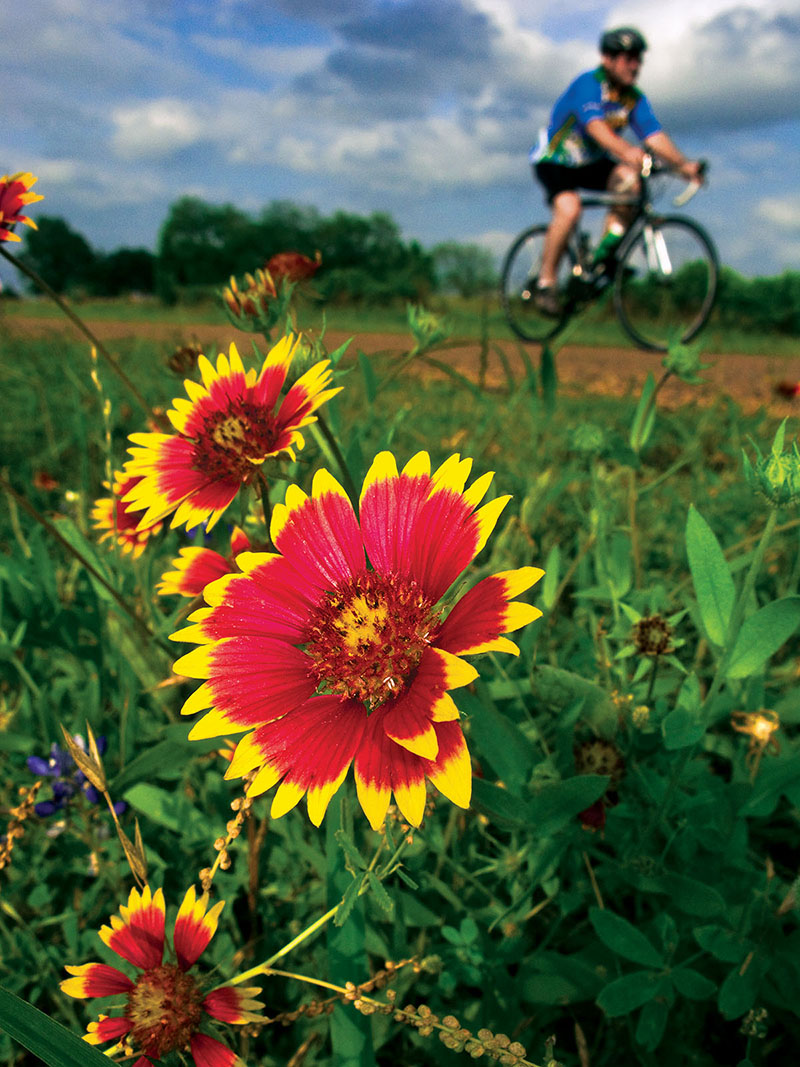
Indian blanket
Gaillardia pulchella — Blooms April to June across much of the state. When viewed in a mass, the brilliant combination of red, orange, and yellow resembles brightly woven fabric. Also called firewheel.
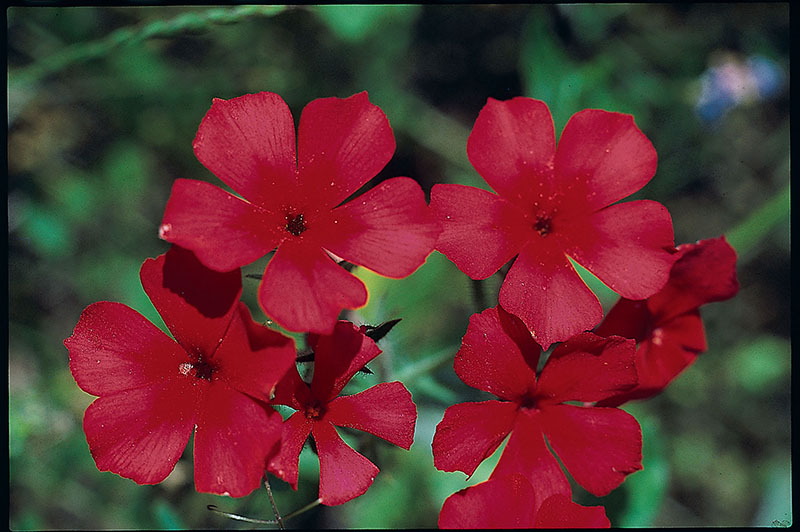
Drummond phlox
Phlox drummondii — Blooms early spring. Occurs most frequently in spectacular masses of color among sandy post-oak woods and along roadsides in south Central Texas. Named for Scottish botanist Thomas Drum-mond, who collected the plants on a visit to Texas in 1834. Most common color is red, but shades of pink, blue, and purple are also seen. Also called wild phlox.
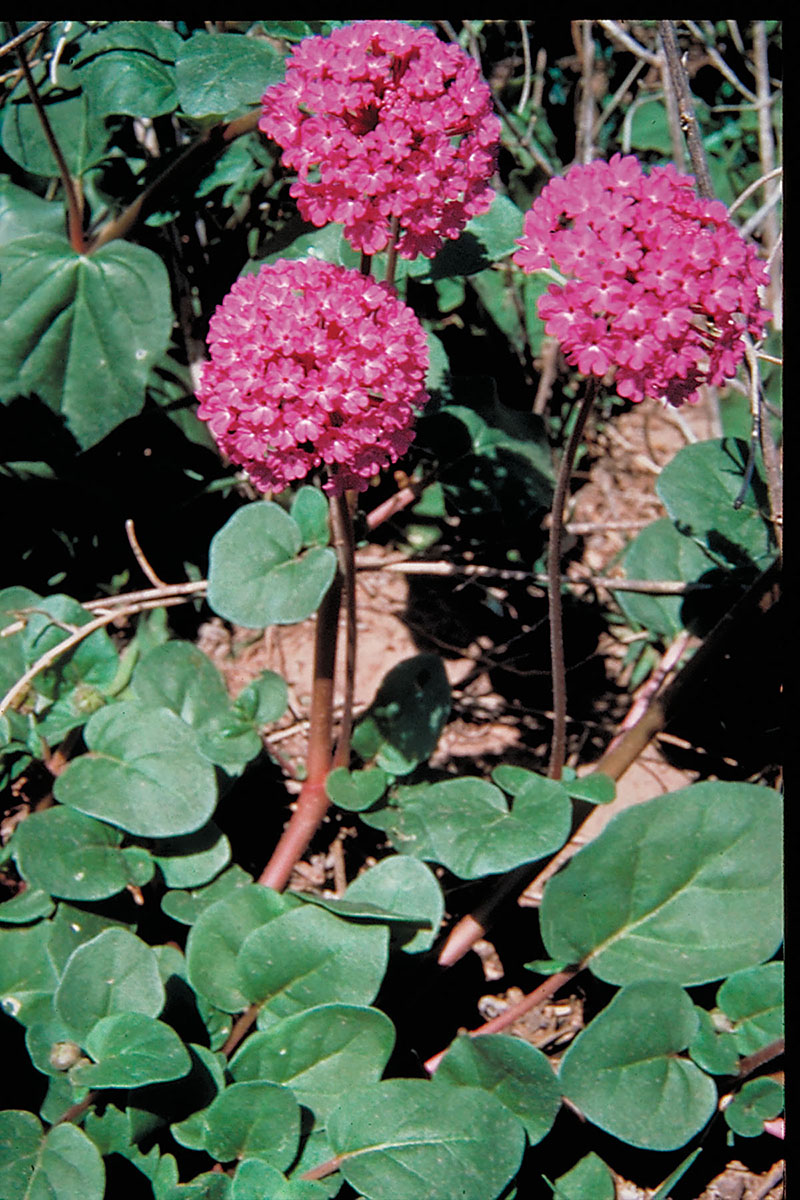
Verbena
Verbena spp. — Blooms most profusely in spring, but may flower at other times of the year depending on rainfall. Found throughout the state; among Texas’ most abundant wildflowers.
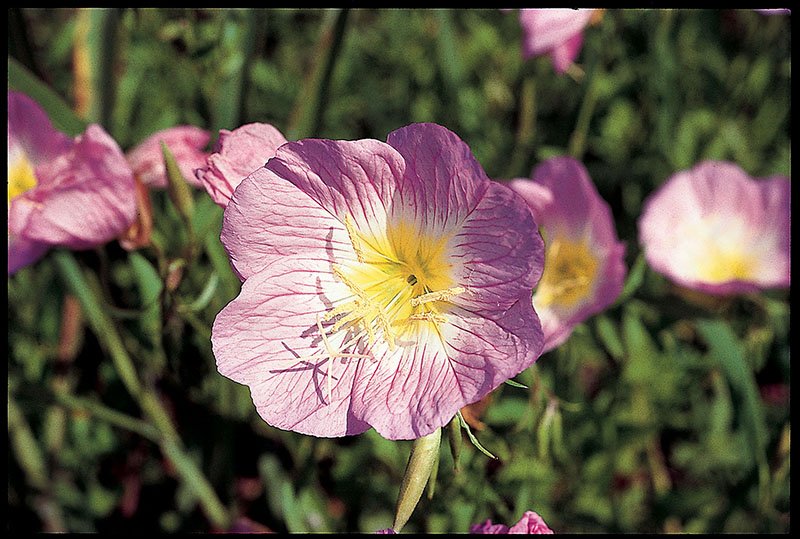
Pink evening primrose
Oenothera speciosa — Blooms April to June across much of the state. Opens at dusk in northern portions of Texas; flowers wither each day, replaced by new blossoms each evening. Elsewhere in the state, blooms stay open all day. Drought-tolerant. Also known as buttercup.
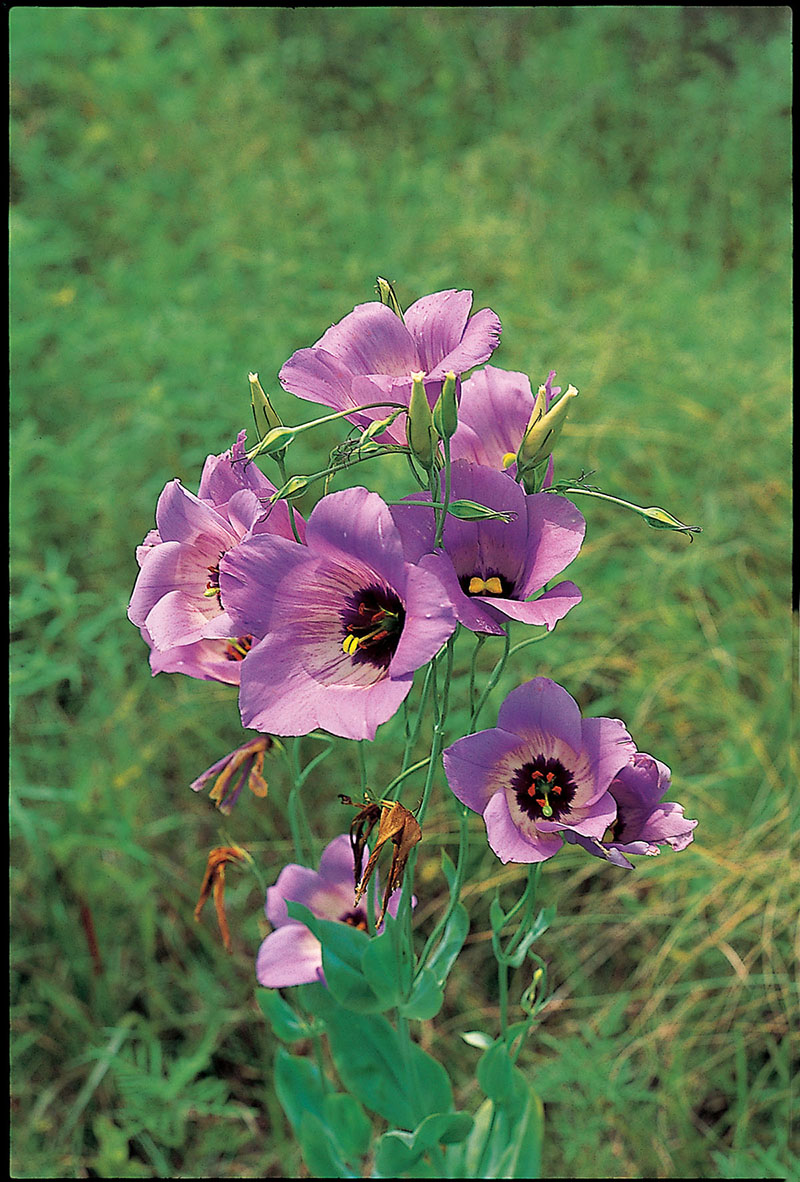
Texas bluebell
Eustoma grandiflorum — Blooms June to September in moist areas in fields and prairies, and in drainage areas, except in Big Bend Country. Bluebells have virtually disappeared in many locations because of indiscriminate picking. Don’t pick them! One of the state’s loveliest flowers; an entire field is stunning. Flowers range from bluish-purple to white, or white with tinges of yellow or purple. Sometimes called prairie gentian and lira de San Pedro (Saint Peter’s lyre).
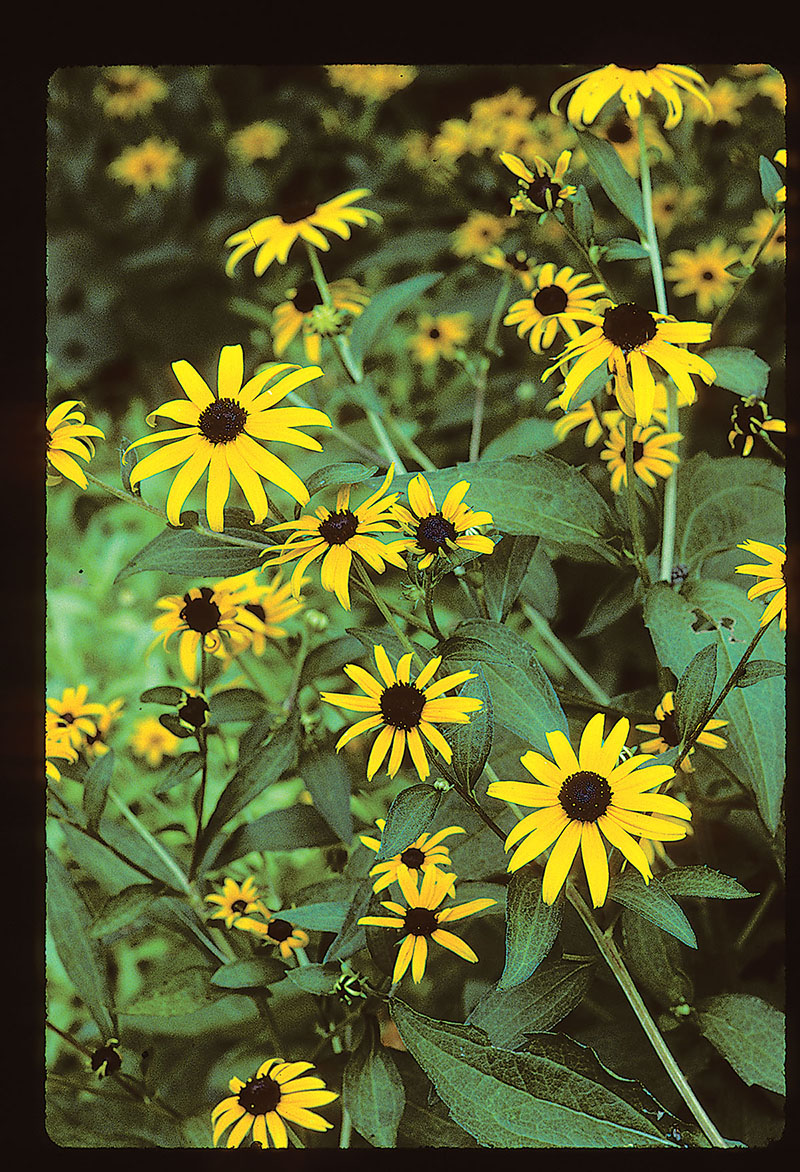
Brown-eyed Susan
Rudbeckia hirta — Blooms May through September. A prairie species found throughout the state. Renowned Swedish naturalist Linnaeus (1701-1778) dedicated the genus to two of his botanist predecessors at the University of Uppsala, the father and son Olof Rudbeck. Hirta means “rough hairy” in Latin.
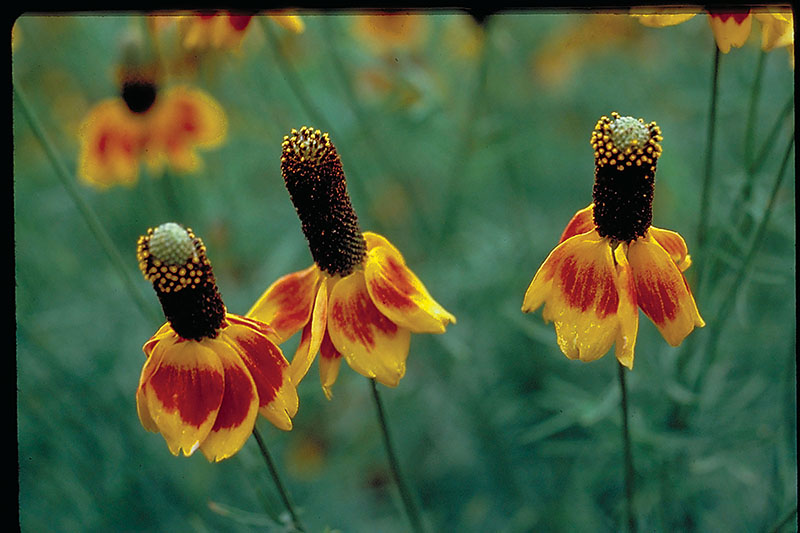
Mexican hat
Ratibida colum-naris — Blooms May to July, later with favorable weather. Common throughout most of state. Named for its resemblance to the tradi-tional high-crowned, broad-brimmed Mexican sombrero.
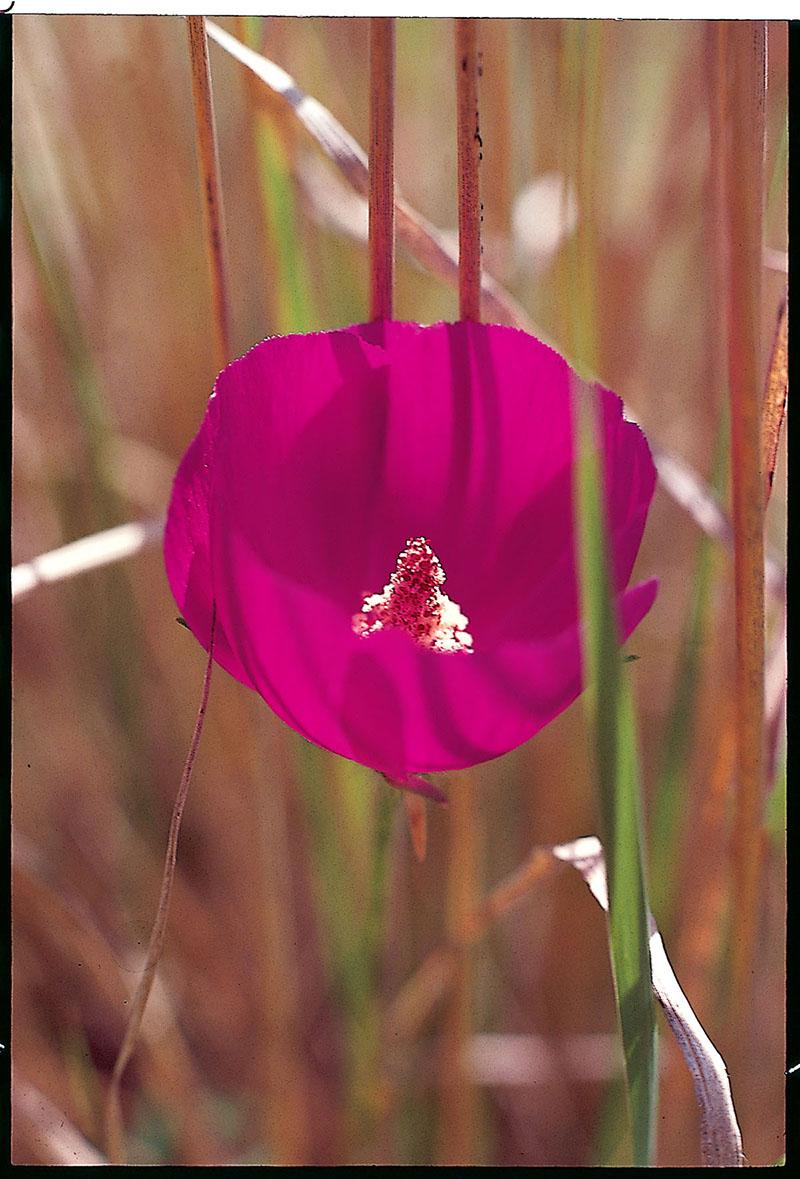
Winecup
Callirhoë involucrata — Blooms early spring into summer, in most parts of the state, except the west. Grows in sandy soils in open woods and scrublands. Mostly single flowers, on plants about six to eight inches high. A tall (two to three feet), branched variety bears many blossoms on one plant.
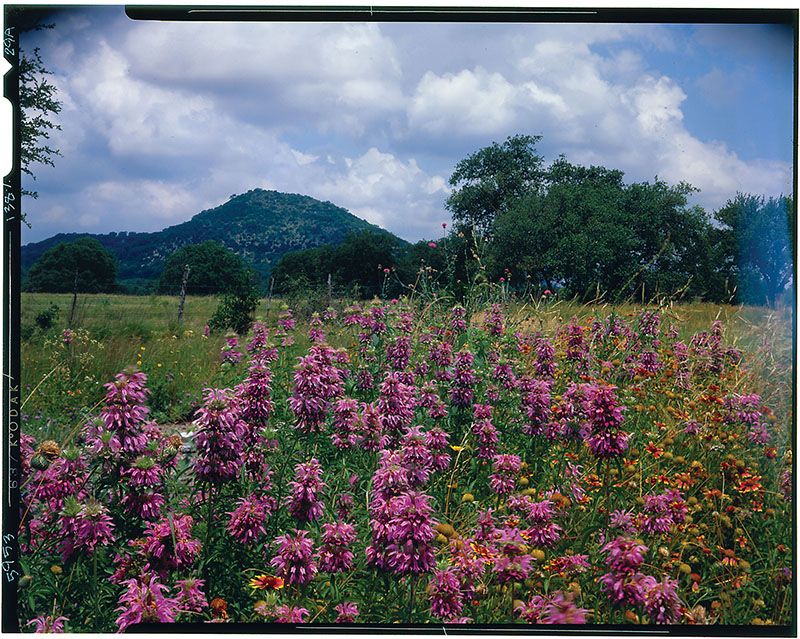
Spotted beebalm
Monarda spp. — Tall erect annual or biennial that blooms May through August. Thrives in sandy or rocky pastures, prairies, plains, and meadows throughout Texas. Also called lemon-mint, horsemint, and wild berga-mot. Lin-naeus named the genus in honor of a Spanish writer and physician, Nicolás Monardes (1493-1588), whose work first introduced much of Europe to such American plants as balsam, coca, corn, passionflower, potatoes, sarsaparilla, sunflower, and tobacco.
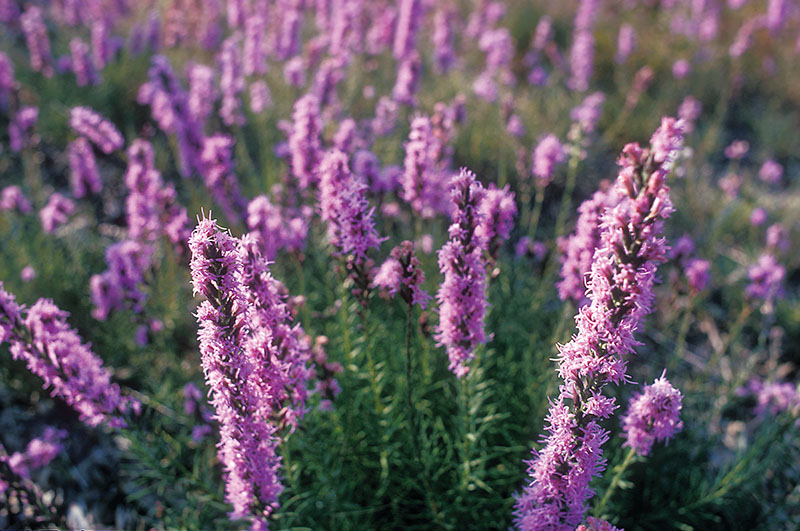
Gayfeather
Liatris mucronata — Blooms August to December on well-drained soils in prairies, plains, limestone glades, hillsides, and on the edges and open areas of woodlands. Also called button snakeroot be-cause roots and underground stems have been used to treat rattlesnake bites. Butterflies and hummingbirds are frequent visitors, and goldfinches and other songbirds eat the seeds.
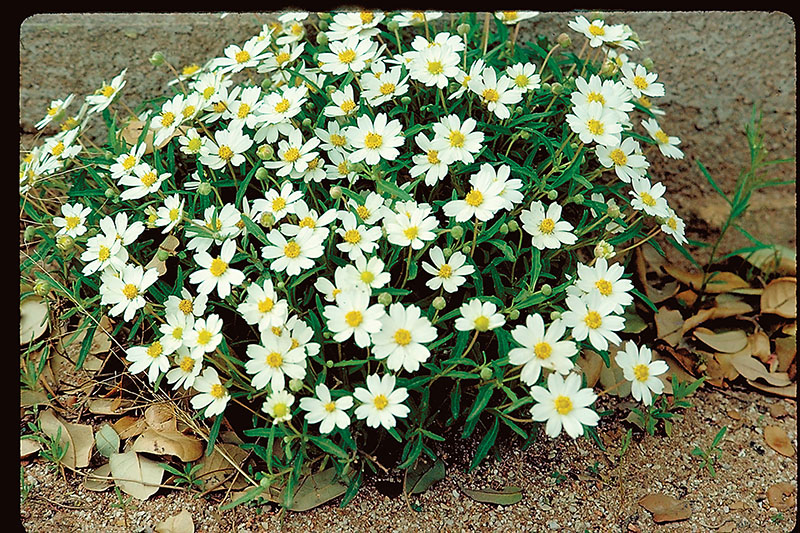
Blackfoot daisy
Melampodium leucanthum — Blooms early spring through fall, thriving on calcareous soils of West and Central Texas. Low-growing perennial; blooms form a dense, compact mound. Other common Texas daisies are Tahoka daisy (Machaeranthera tanacetifolia), huisache daisy (Amblyolepsis setigera), chocolate daisy (Berlandiera lyrata), and sleepy daisy (Xanthisma texanum).
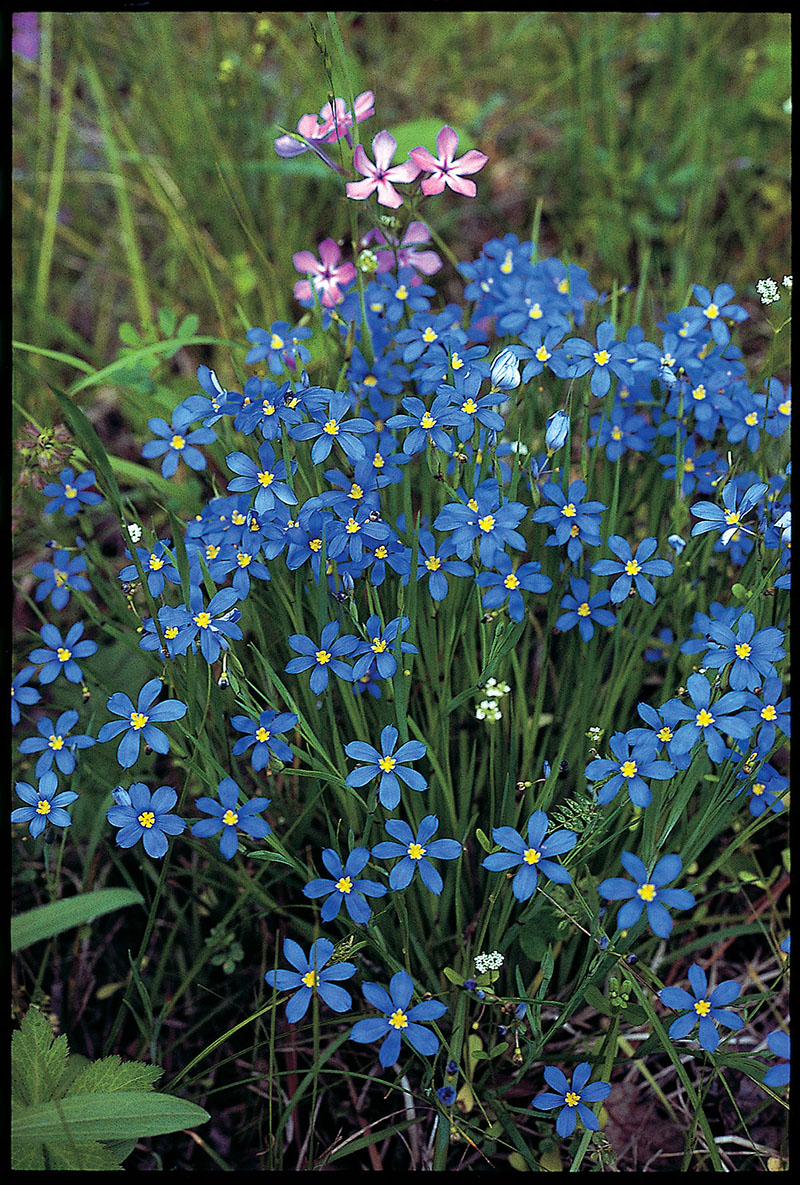
Blue-eyed grass
Sisyrinchium spp. — Blooms March-May, blanketing roadside pastures with blue to purple blooms and grasslike leaves on sunny spring days. Common in sandy forests of East Texas and on prairies of the Texas Gulf Coast.
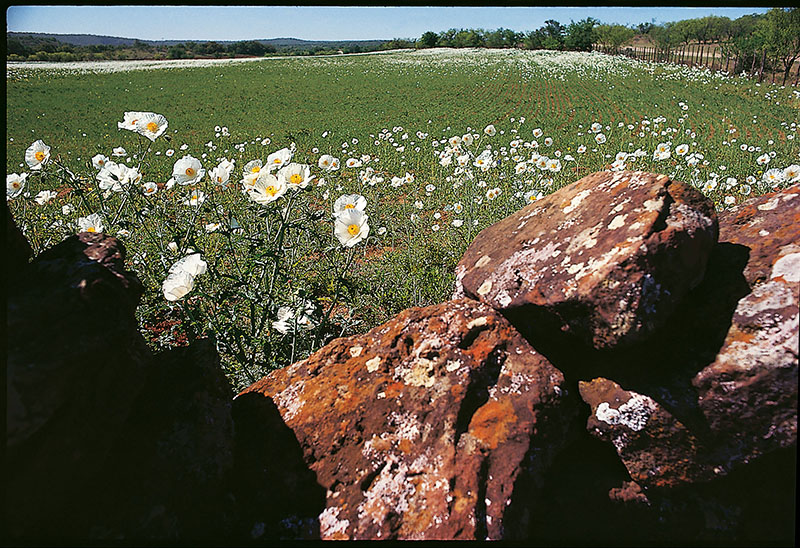
White prickly poppy
Argemone albiflora — Blooms profusely in April. Abundant, nettle-like plant of Central and South Texas. Plants may grow more than three feet tall. Close-ly related species are yellow, pink, and rose. The herbage is so prickly that cattle leave it untouched even during severe droughts when they have grazed other plants to the ground.
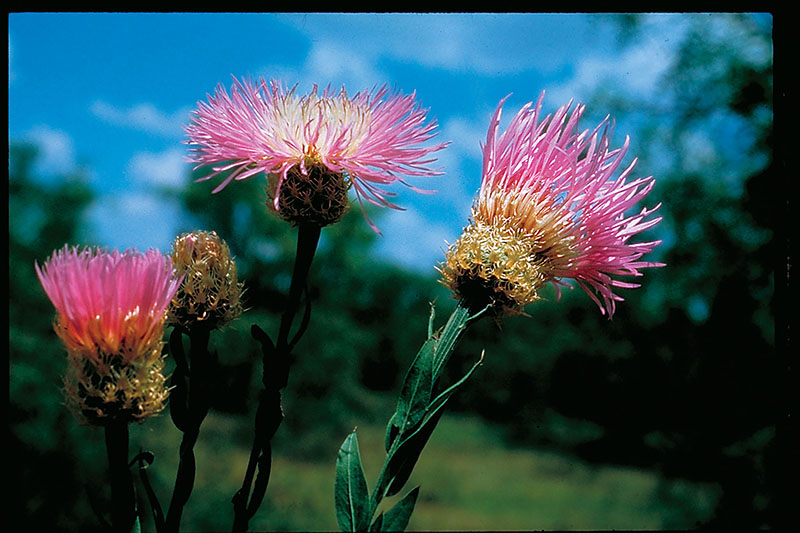
Basketflower
Centaurea americana — Blooms June and July from east Central Texas westward and north into the Panhandle; in the Trans-Pecos, sometimes blooms a second time in August. Also called shaving brush and star thistle (but isn’t prickly like a thistle).
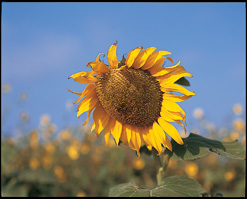
Common sunflower
Helianthus annuus — Blooms March through December in vacant lots, fields, pastures, open stream banks, and along roadsides and railroad tracks throughout the state. Texas boasts some 19 varieties of wild sunflowers, in-cluding Maximilian sunflower (Helianthus maximiliani) and swamp sunflower (Helianthus angustifolius).
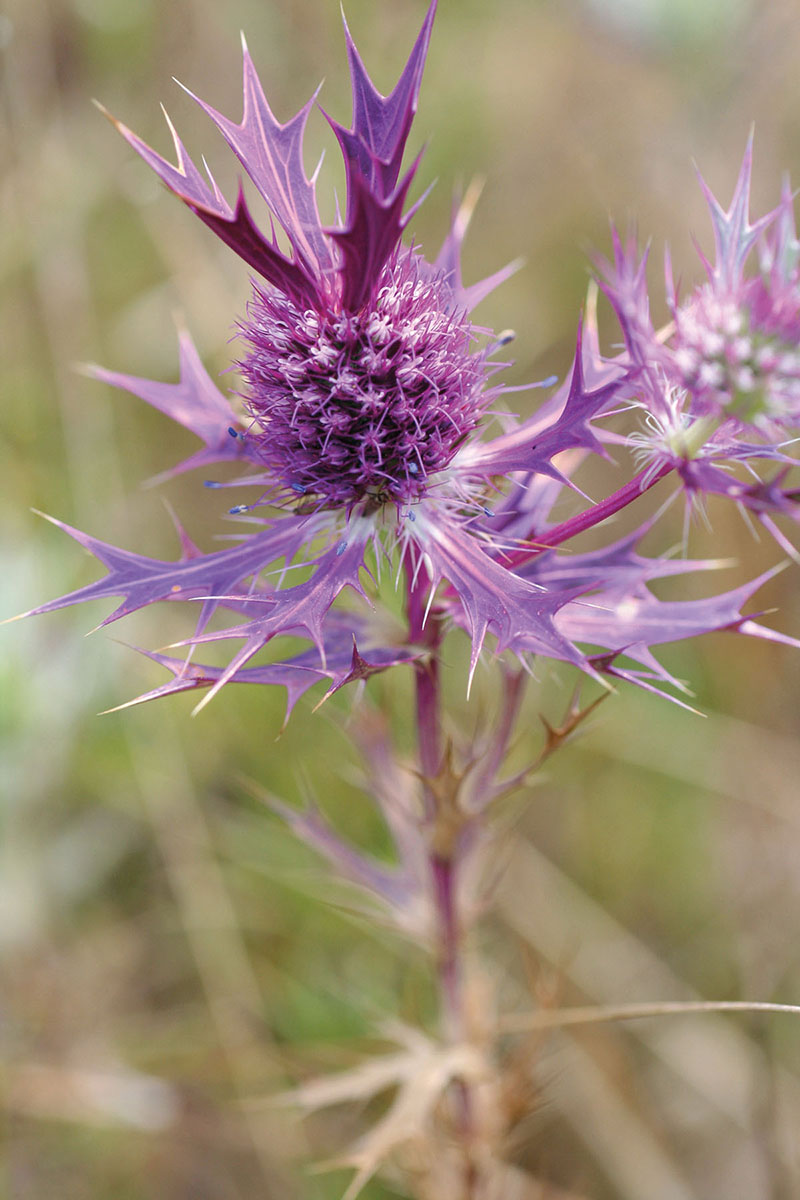
Eryngo
Eryngium leavenworthii — Blooms July through October in Central Texas. Also called false purple thistle. Striking flowers on plants that grow up to three feet tall. In late summer it forms dense masses of purple in fields and prairies and along roadsides.
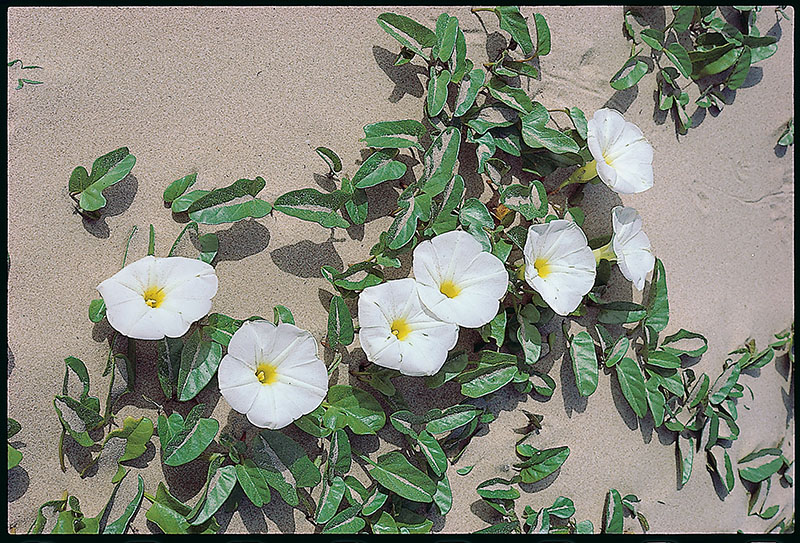
Beach morning glory
Ipomoea stolonifera — Blooms April through December on Gulf Coast dunes and beaches. Roots are im-portant in helping to stabilize the dunes. This white morning glory frequently grows with the rosy and purple goatfoot morning glory (Ipomoea pescaprae), which also helps stabilize coastal dunes
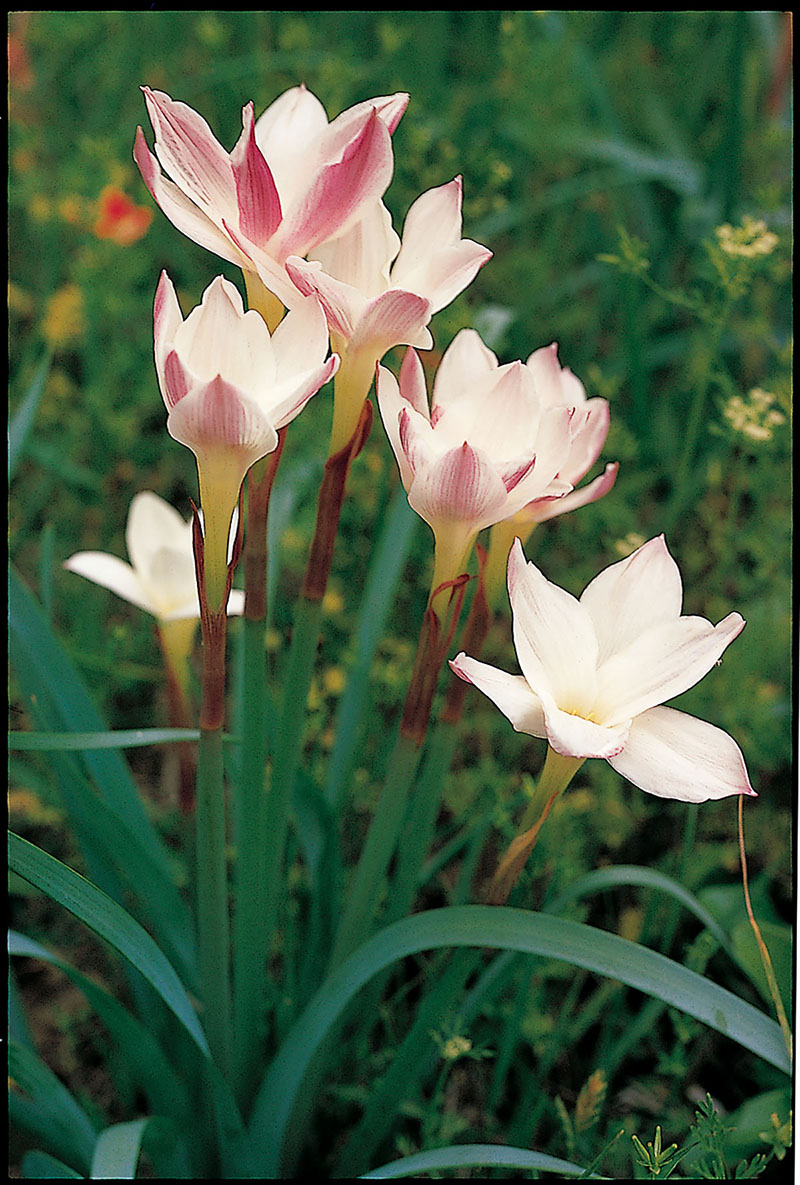
Rain lily
Cooperia pedunculata — Appears like magic a few days after heavy rains, sometimes in masses, across the eastern two-thirds of the state. Single white bloom atop a straight, foot-high green stem. Blossoms open slowly at dusk, gradually expand during the night, in full flower by morning. Flowers may last up to four days be-fore turning pinkish and withering. Delicate, lovely fragrance. The smaller evening star rain lily (Cooperia drummondii) tends to bloom in late summer and fall, while the larger rain lily blooms in spring and early summer.
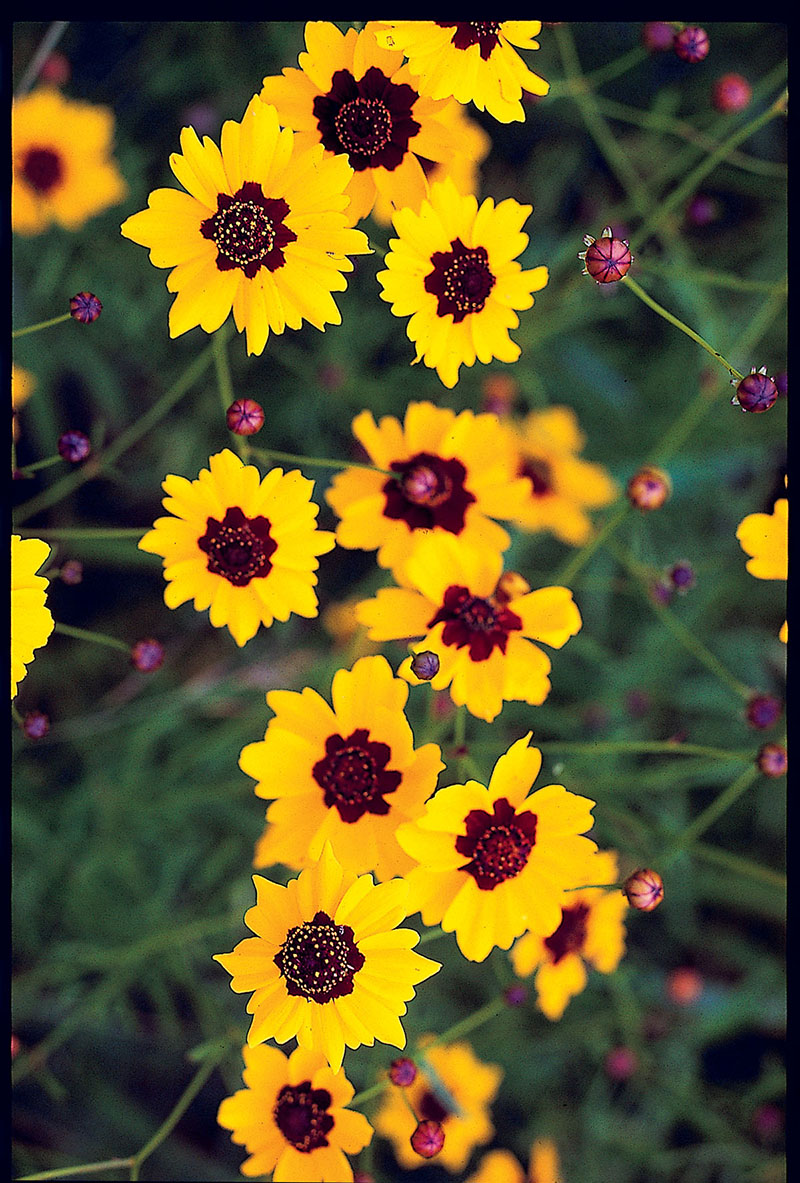
Coreopsis
Coreopsis spp. — Various species bloom somewhere in the state every month except January. “Coreopsis” is from a combination of New Latin and Greek for “having a buglike appearance,” referring to the seed, which resembles a beetle. Hence, the common name, tickseed.
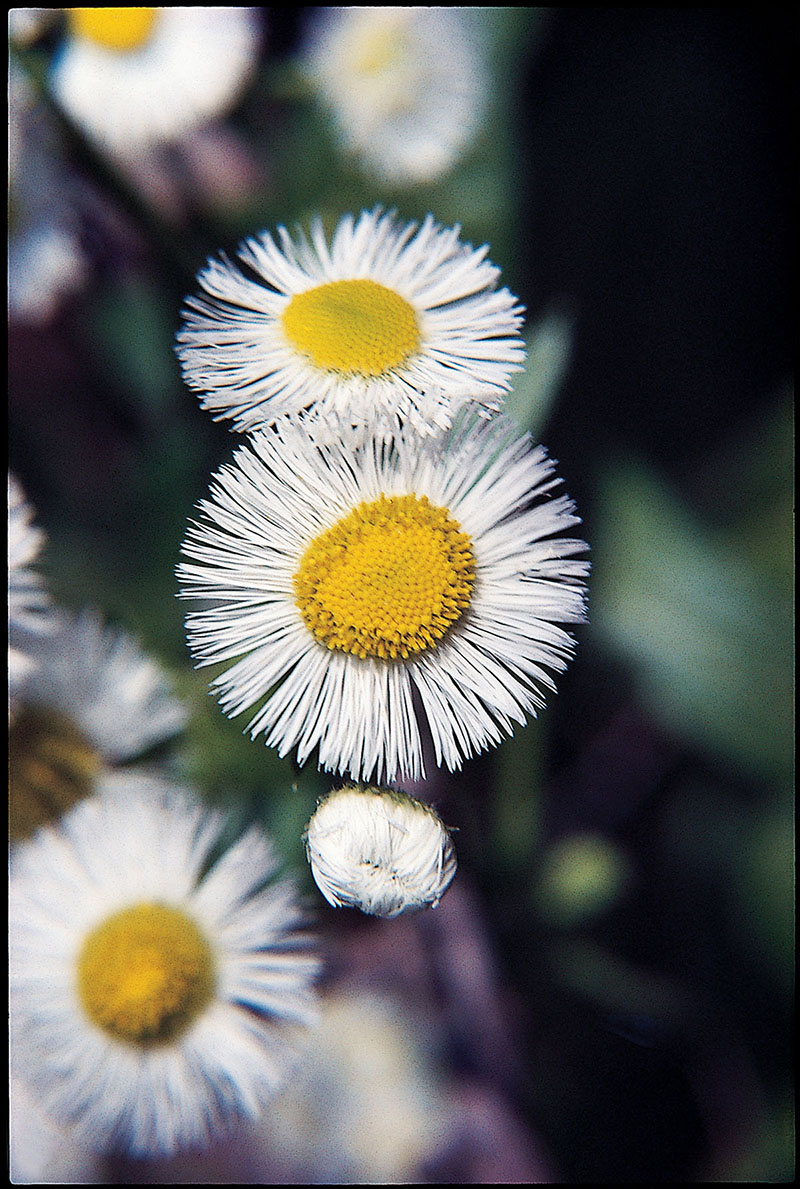
Fleabane
Erigeron philadelphicus — Blooms March to August in moist soils in fields, pastures, woodland edges, roadsides, and along streams throughout the eastern half of Texas. Prairie fleabane (Erigeron modestus) blooms March through November in gravelly or rocky calcareous soils in open areas and hillsides in North Central and western Texas.
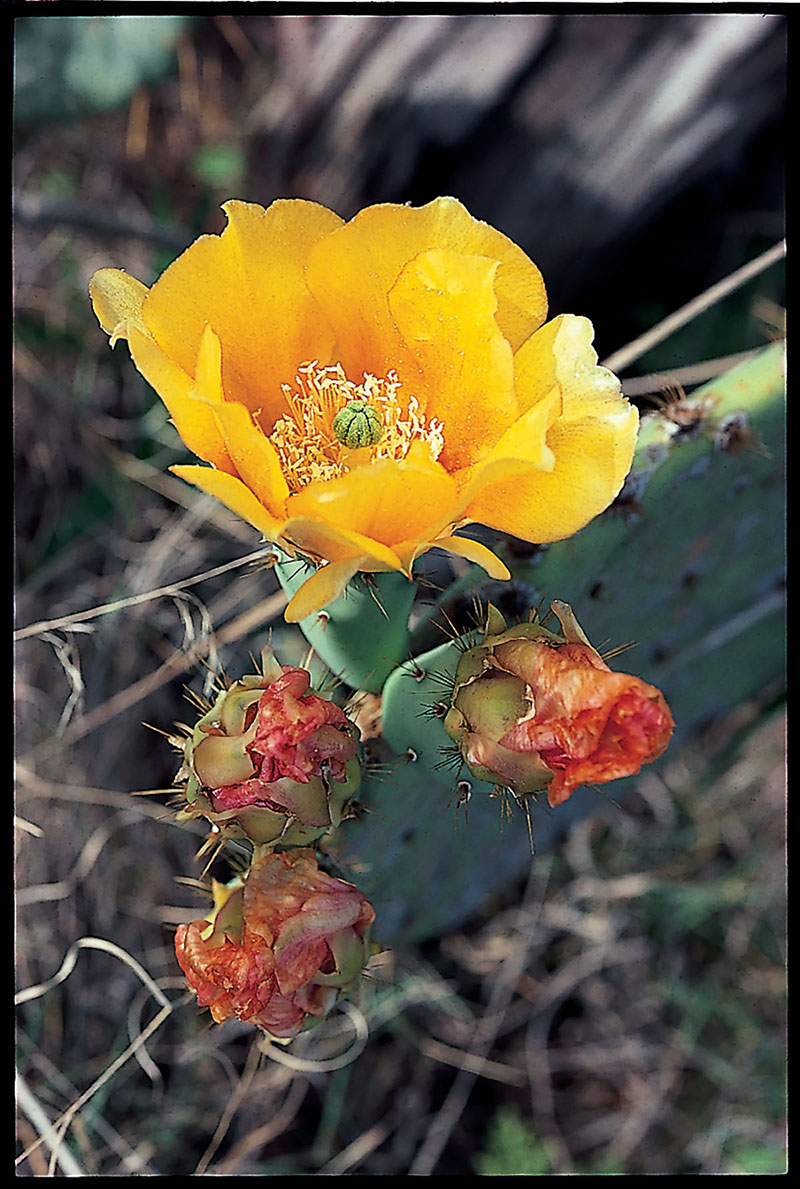
Prickly pear cactus
Opuntia spp. — Blooms in shades from yellow to red across the state. Perennial. The fruit, or tuna, which ranges from red to deep maroon when ripe, makes a very good jelly.
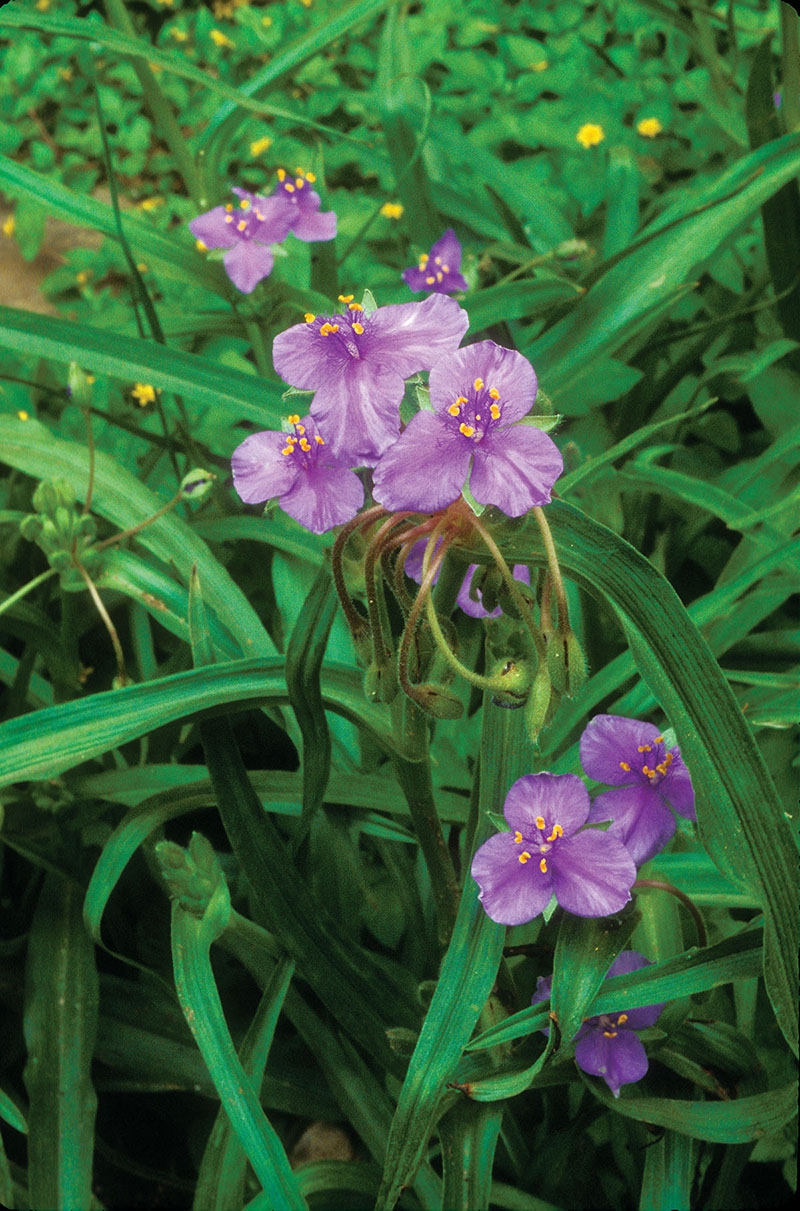
Spiderwort
Tradescantia spp. — Blooms statewide February through June. Spiderworts were named for John Tradescant the Elder (1577-1638) and John Tradescant the Younger (1608-1662), both of whom were English royal gardeners. The Tradescants grew plants sent to them and collected by them in America. As a result, spiderworts are common in English gardens.
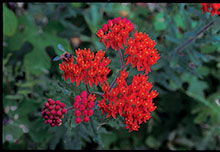
Butterfly weed
Asclepias tuberosa — Blooms April to September throughout Texas in fields, thickets, open woodlands, and hillsides. The densely packed flowers, rich in nectar, attract bees, beelike flies, and butterflies.
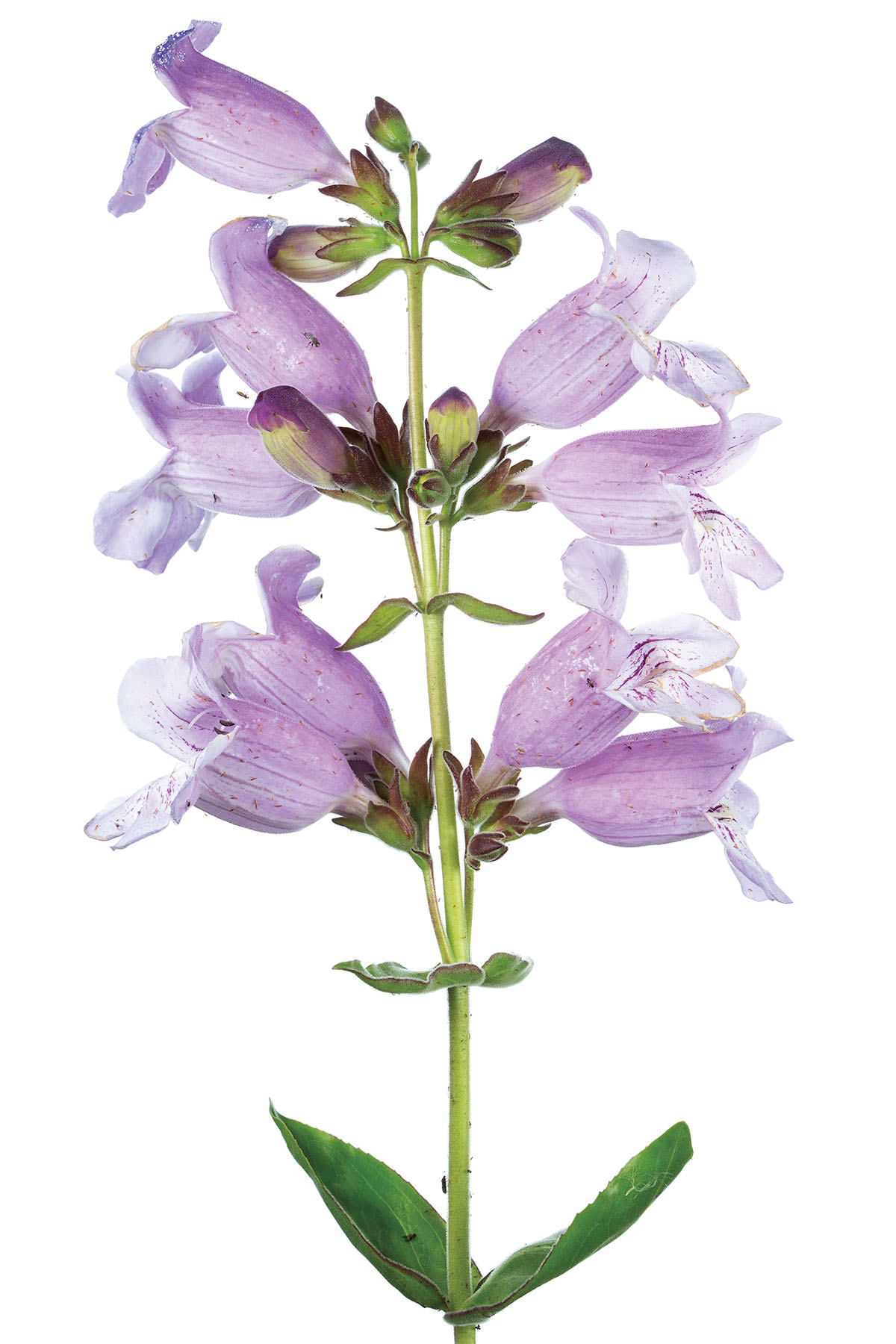
False dragonhead
Physostegia spp. — Depending on the species, blooms April through August in the central and eastern portions of Texas. Physostegia flowers may be moved up, down, or sideways, and will remain in those positions. Hence, the common name, obedient plant. A member of the mint family.
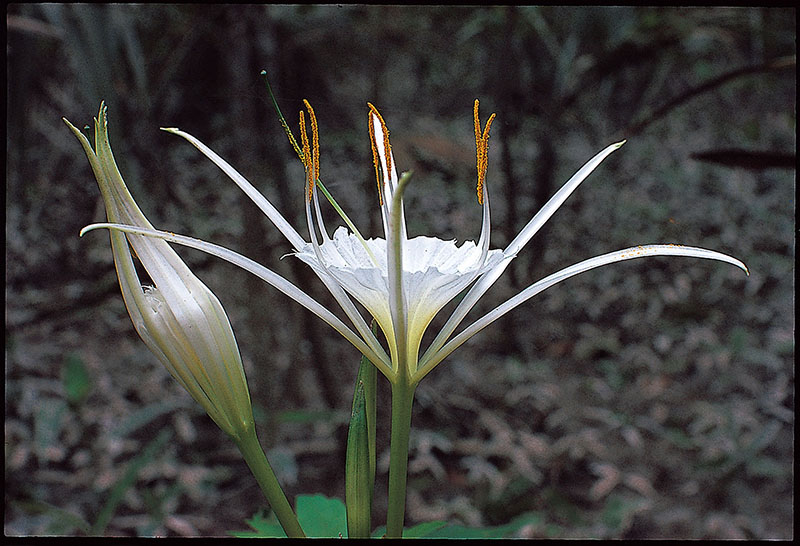
Spider lily
Hymenocallis liriosme — Blooms March to May. Prefers swampy or other moist bottomland, banks of streams, and ditches along the Gulf Coast and in East Texas. Plant can grow 40 inches tall, flowers to six inches across. The elegant plant gets its genus name from the Greek kallos, meaning “beautiful,” and hymen, which means “membrane.” Hymen was also the Greek god of marriage. A member of the amaryllis family.
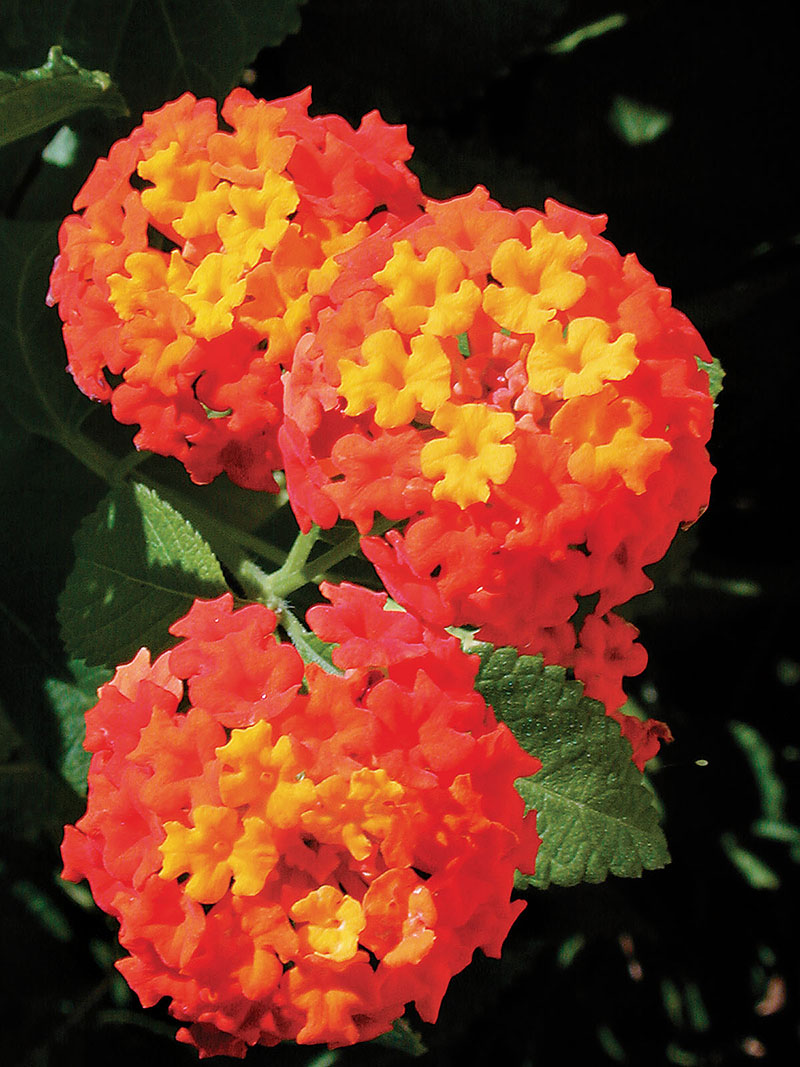
Texas lantana
Lantana urticoides or L. horrida — Blooms April to September throughout Texas in fields, thickets, open woodlands, and hillsides. The densely packed flowers, rich in nectar, attract bees, beelike flies, and butterflies.
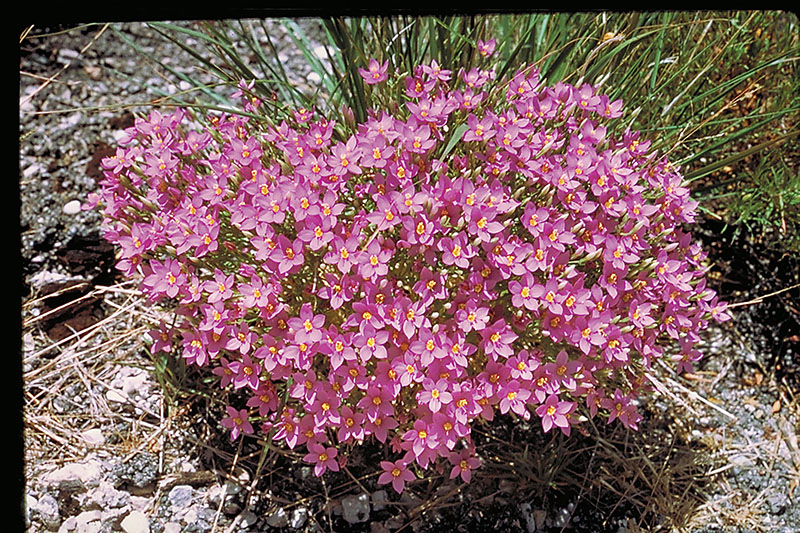
Mountain pink
Centaurium beyrichii — Thrives on the barren, gravel-strewn hills of Central Texas and westward. The flowers, which bloom May through August, branch to form a nearly perfect bouquet. Called quinine weed by pioneers, the plants were dried and used to reduce fevers.
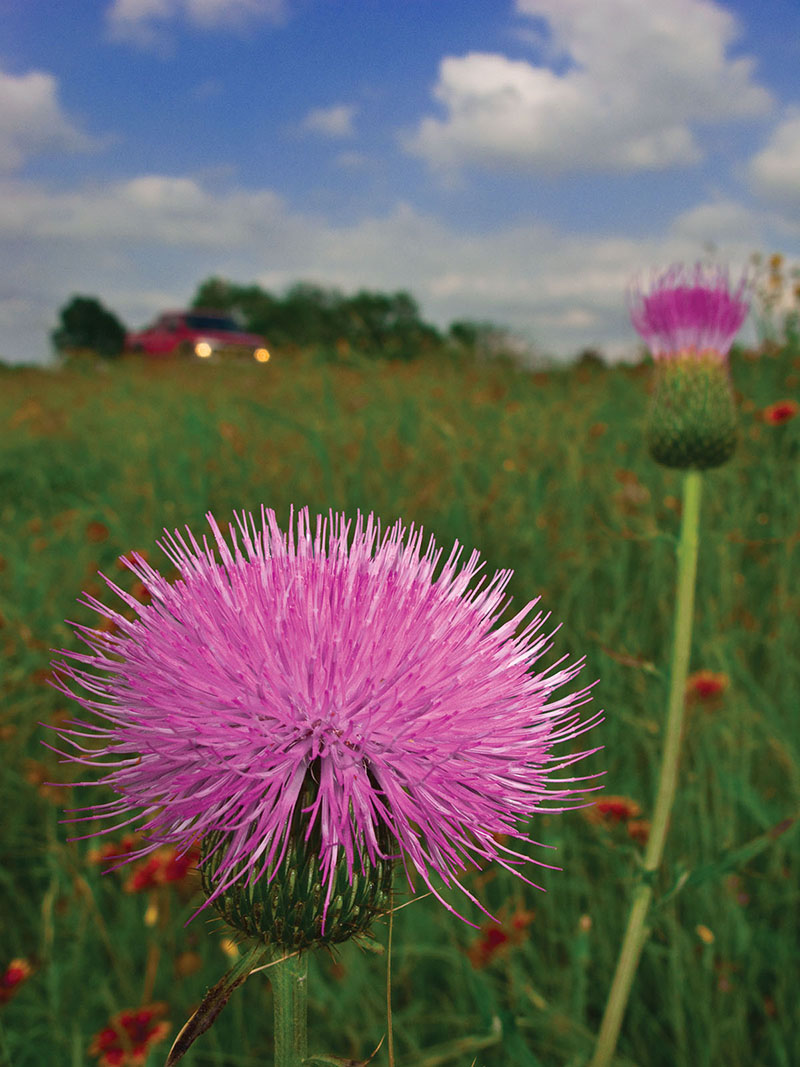
Texas thistle
Cirsium texanum — Blooms throughout Texas, except in the Panhandle, April to August. Bumblebees and butterflies are attracted to Texas thistle. Goldfinches eat the seeds and line their nests with the fluff of the ripened seeds.
